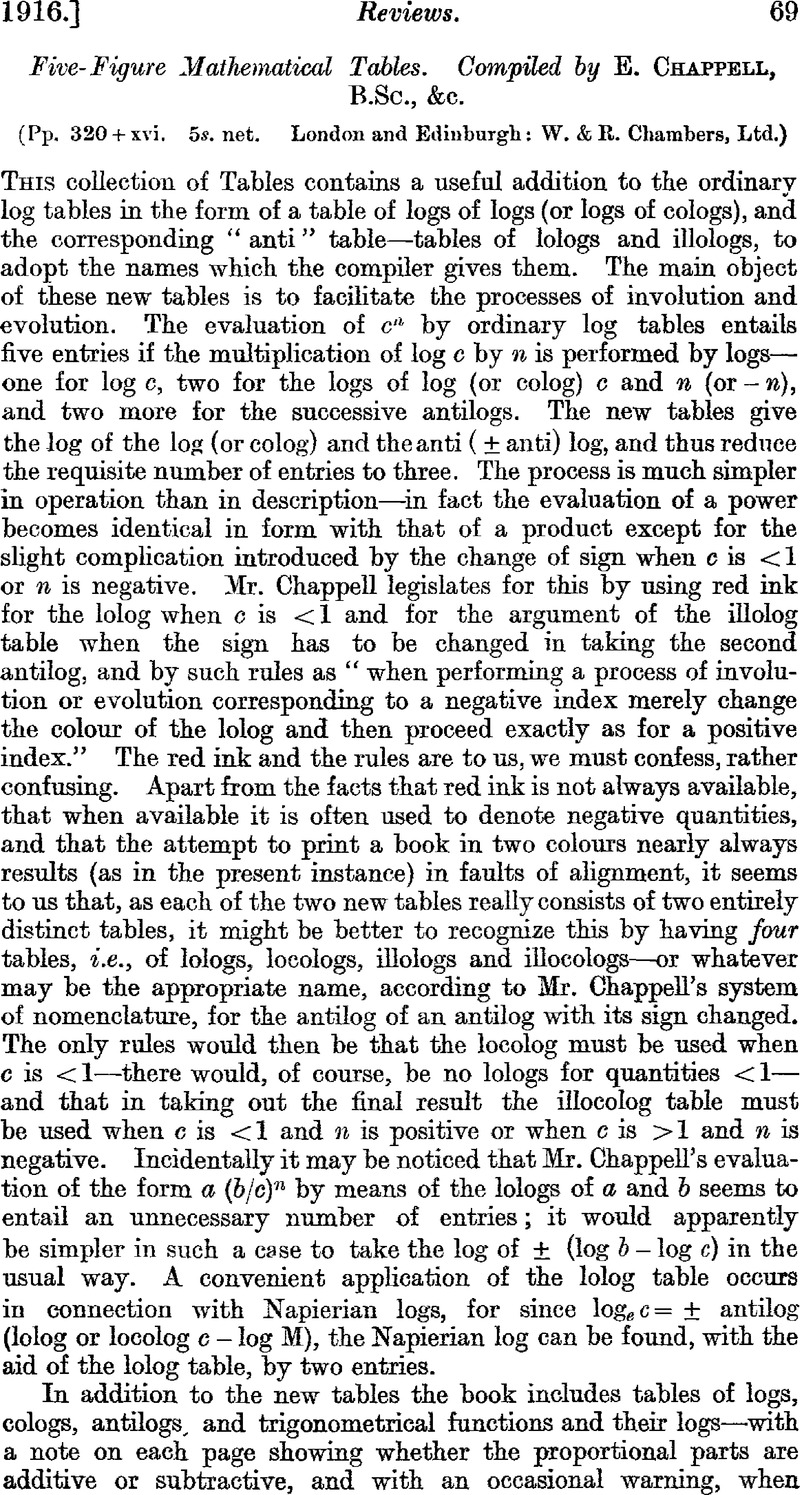No CrossRef data available.
Published online by Cambridge University Press: 18 August 2016

page 70 note * It is only fair to say that some authorities seem to consider a colog table indispensable. Prof. G. H. Bryan and Mr. T. G. Creak, for example, in an article entitled “The Bordered Antilogarithm Table” in the Mathematical Gazette for December 1915, state that “for operations involving both multiplication and division … logarithms of recipocals are constantly needed.” They are of opinion that “either the table of antilogarithms or that of logarithms may be banished with advantage,” and as a colog table cannot be combined with a log table, they propose to banish the latter and to use, for all purposes, an antilog table with two complementary arguments–the log of the entry being given at the left side and top of the table, and its colog at the right side and bottom, and both logs and cologs being found by inverse entry. A specimen table (an incidental feature of which is that five figures are given in the earlier part of the table where the logs are changing rapidly, and four figures in the latter part) is appended to the article.